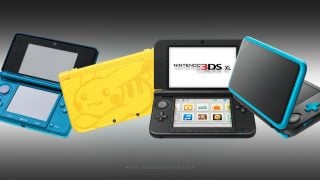The following article was written prior to Xenoblade Chronicles 2’s release in North America as a way of examining and celebrating the series’ history and development. Now, as Xenoblade Chronicles Definitive Edition releases in two months’ time, we thought it would be a better time than ever to extol the franchise’s virtues. For all those curious about Xenoblade and its significance, please read on:
Before Xenoblade: Takahashi, Monolith Soft, and the bounds of creativity
Xenoblade Chronicles was the brainchild of one Tetsuya Takahashi, head of Monolith Soft and the man instrumental to the entire Xeno-series. Takahashi began his career briefly at Nihon Falcom before moving to Squaresoft in the ’90s, where he worked as a graphics designer on many hit RPGs, including the Final Fantasy series (he was actually the graphics director for Final Fantasy VI, and responsible for the design of the iconic Magitek armor in the game’s opening). He was one of two people the company looked to for the scenario for what would become Final Fantasy VII – the other being Tetsuya Nomura.
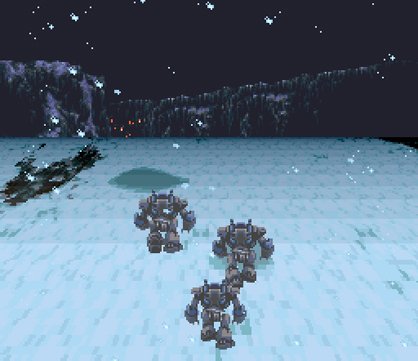
When Takahashi submitted his proposal for FFVII’s plot, it was passed over in favor of Nomura’s, as the company felt Takahashi’s outline was too dark and complicated (think about how convoluted FFVII is and let that sink in for a second). Instead, they offered to let Takahashi develop his ideas as a separate project, and Xenogears was born. Using inspiration from Gnosticism, Jungian psychology and more, alongside a variation of Square’s ATB system, the game became a commercial and critical success, voted among some of the greatest games of all time in Japan.
Xenogears was originally planned to be an entire series. However, Takahashi and his coworkers were becoming dissatisfied with Square, who they felt were focusing on Final Fantasy and stifling his creative flexibility. He and fellow Square dev Hirohide Suguira broke off from the company and formed Monolith Soft as a subsidiary of Namco, and set about making a spiritual successor to Xenogears, known as Xenosaga.
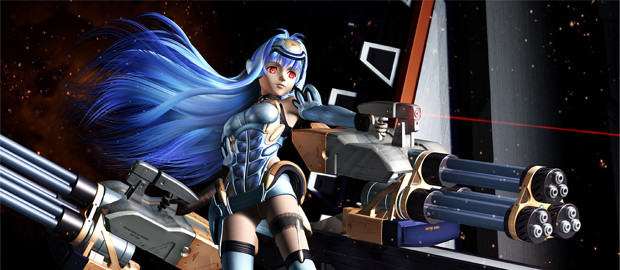
Xenosaga was planned to be a six-part series initially, and came out the gate with Xenosaga Episode I – strong in sales and reception. However, its ambition and missteps proved hazardous, as the series’ second game, Episode II underperformed, and adjustments were made to rework the plot so that Episode III would conclude the series. Morale at Monolith Soft was low, and Takahashi and co. were becoming disillusioned with Namco just like they were with Square.
The Move to Nintendo and the making of Xenoblade
In 2006, Takahashi was struck with the idea for a game that would take place on the body of two frozen giants. He worked on the concept throughout the year, while negotiations were taking place with Shinji Hatano, an executive director at Nintendo, for Monolith Soft to jump ship over to the Big N. Such a move was unusual for Nintendo, which wasn’t known for mergers or buying out second party developers, but it went through due to Hatano’s close relation to Takahashi and a similarity in design philosophy between the two companies.
When Monolith proposed the game in 2007, it had no relation at all to the previous Xeno games, instead being called “Monado: The Beginning of the World”. The one who suggested that the game be tied to its spiritual predecessors was none other than Satoru Iwata, who suggested that the title be changed in order to honor Takahashi’s past work and the effort he was putting into the game. While spiritual in nature, Takahashi adopted the “Xeno” title once again, to continue the creative thread he had started roughly a decade earlier.
Takahashi and Monolith Soft had very particular goals in mind for Xenoblade. At the time, JRPGs were floundering, and they attributed it to them focusing too much on story and not enough on gameplay. Besides balancing those two aspects, they also threw out certain conventions (such as a transition between overworld and battle) in favor of a smoother game experience. Inspired by MMOs, the team set about crafting a massive game world that would be roughly the size of the Japanese Archipelago, stunning in scale and breadth.
Takahashi was also very particular about the game’s story, bringing in both someone from outside the gaming industry to offer an outsider’s touch (Yuichiro Takeda) and an experienced Nintendo writer to offer oversight (Yurie Hattori). They cut back on some of the excess present in Xenosaga in favor of a tighter, more focused story. Takahashi and co. particularly focused on the game’s protagonist, Shulk, as they felt most RPG main characters weren’t well-favored or super memorable, and they sought to make him stand out from the crowd. Takahashi was also deeply involved in the game’s music production, which featured six different stellar composers.
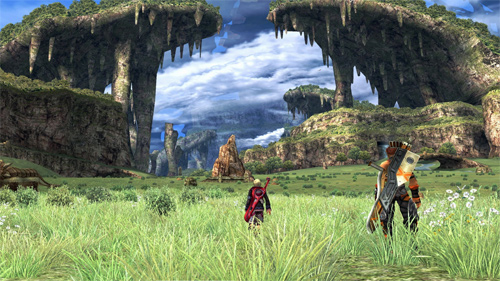
The end result was one of the greatest games ever made. Featuring sweeping landscapes, a battle system that combined the best of Western and Eastern game design, a well-constructed plot full of memorable characters and much more besides, Xenoblade proved to be the invigorating and unique boost that JRPGs needed.
Release in Japan, European localization, and Operation Rainfall
Xenoblade released in Japan on June 10th, 2010, garnering critical accolades and reaching commercial success. But it would be over a year before the West saw it, as Europe ended up releasing the game on August 19th, 2011 under the localized title Xenoblade Chronicles. Having a game released in Europe – especially one with such a large script and a need for voice acting – was unusual for the time, but it helped give the game a distinct identity and stand out from some other RPGs at the time. In addition, the game had a special edition that came with a unique, Monado-colored Classic Controller. Like in Japan, the game received high praise across the EU.
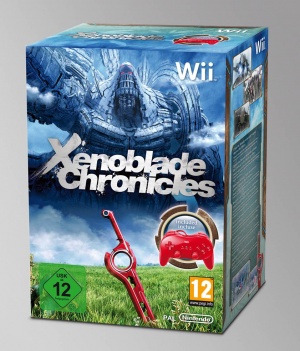
People in America, however, were suspicious of the lack of news regarding the game’s release. It was absent entirely from E3 2011, and later news revealed the scandalous accusation that NOE wanted to show the game but NOA wouldn’t allow it. Speculation arose that, much like a particular game that rhymes with “Brother Free”, it would not see an American release.
In response to this, and a similar drought of news on the similarly released-in-Europe Pandora’s Tower and The Last Story, online fans launched Operation Rainfall. Through petitions, emails, messages, and more, the fans of these three games spread awareness of the games and attempted to get NOA to cave in and localize them. This included an effort to pre-order the game’s original “Monado: The Beginning of the World” title on Amazon, which spiked it straight to the top of the pre-order game charts, beating out Zelda, Call of Duty, and more.
All of this, plus support from several Japanese developers, eventually culminated in victory. Xenoblade saw release solely through GameStop in the US, coming out on April 6th, 2012. The limited release would eventually make the game incredibly rare, though a New 3DS port and a digital Wii U release have made it easy enough to play. The game ultimately ended up selling better in the West than in Japan.
Xenoblade’s story is one of creative triumph – how a man and his team sought to make the game they envisioned and succeeded, and how passionate fans who might have been denied the experience pushed back and won. It may not be the most famous franchise, or the best selling, but there’s undoubtedly a sense of passion and uniqueness to be found in its history, one that many other franchises can’t lay claim to. And for that, I think it should be celebrated.
Leave a Comment

